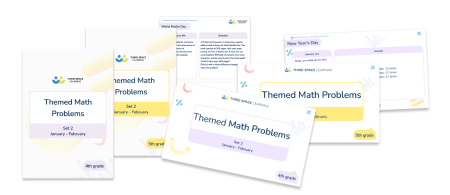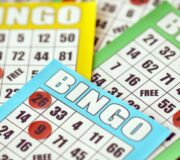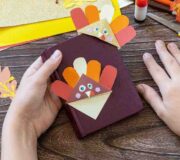Leap Year Math Activities for Your Students
Finally – in a leap year we all get the extra hour in the day and day in the month we’re looking for. And here’s how to celebrate that with some fun leap year elementary and middle school math activities.
February 29th is the date when leaplings or leapers (as those whose birthdays fall on this date are known) around the world can celebrate their elusive birthdays, usually missed in a normal year, and a sign that the Summer Olympic Games, which are always held in a leap year, are on their way.
At Third Space Learning we are always on the lookout for any opportunity to come up with a math quiz and a leap year is surely a call for some math fun!
Here are some facts about leap years with 5 quick quiz questions (QQQs) you can put to your students to help them relate math to real life and to prompt some interesting class discussions.
- QQQ 1: Why do we have leap years?
- QQQ 2: One year is almost 365 days and a quarter long, so why do we have a leap year every four years?
- QQQ 3: Why February 29th?
- QQQ 4: What is the likelihood of being a leapling?
- QQQ 5: When should a leapling have their birthday party in a non-leap year?
- What a difference a day makes: additional class discussions
QQQ 1: Why do we have leap years?
One Earth year, a complete orbit around the sun, does not take an exact number of days. It actually takes about 365.2422 days – we call this a solar year. In a normal Gregorian calendar year (the calendar introduced by Pope Gregory XIII), we have 365 days but this is not accurate.
As we can’t have a decimal of a day, to keep our clocks and calendars in sync with the Earth, and its times and seasons, we need an extra day! This is why we need leap years (and leap seconds).
Themed Math Problems: Set 2 (Jan – Feb), 4th and 5th Grade
4th and 5th Grade math problems that link to key dates in the Winter Term, including, Martin Luther King Jr. Day, Chinese New Year, and Valentine’s Day.
Download Free Now!
QQQ 2: One year is almost 365 days and a quarter long, so why do we have a leap year every four years?
As there is an extra quarter of a day each year, every 4 years there is an extra full day; we make up for this with a leap day.
The leap year rules do get a little bit complicated after this. Since a year isn’t quite 365 days and a quarter (365.2422 days), we have to lose three leap days every 400 years. There is a mathematical equation that works this out, but we won’t go into this now!
- Quick class activities: Be a leap year calculator! The last four leap years have all followed the four times tables. Which of the following years is not a leap year (i.e. is not divisible by 4 with a whole number answer)?
- BONUS: When will the next leap year be?
2000, 2004, 2008, 2009, 2012
Answer: 2009

Meet Skye, the voice-based AI tutor making math success possible for every student.
Built by teachers and math experts, Skye uses the same pedagogy, curriculum and lesson structure as our traditional tutoring.
But, with more flexibility and a low cost, schools can scale online math tutoring to support every student who needs it.
Watch Skye in action
QQQ 3: Why February 29th?
This is due to the ego of Roman Emperor Caesar Augustus. When Julius Caesar was Emperor, before Augustus, February had 30 days and August had 29. This was called the Julian calendar.
When Augustus came to power he was jealous that July, the month named after his predecessor Julius, had 31 days while the month named after him only had 29.
He therefore pinched a couple of days from the month of February for August, making August 31 days and February the shortest month at just 28 days, and 29 every 4 years.
- Quick class activity: Can your class work out which month has the most class birthdays in and which has the least, and pinch some days for the former from the latter? What would the months of the year look like then?
QQQ 4: What is the likelihood of being a leapling?
If we assume that a baby is equally likely to be born on any day of the year, the likelihood of being born on any specific day is 1 in 365. The likelihood of being a leapling is 1 in 365 x 4 + 1 (4 years and 1 day).
- Quick class activity: Can your class work out the probability of being a leapling?
Answer: 1 out of 1,461
QQQ 5: When should a leapling have their birthday party in a non-leap year?
Leaplings only have a birthday every 4 years, a nightmare scenario for most children! But you can assure them that most leaplings have their birthday celebrations each year on either February 28th or March 1st.
- Quick class activity: If a leapling is deciding whether to have their birthday party on the 28th February or 1st March, and they want to have it on the closest day to the time they were born, can your students work out when Ellie, Sophie and Chris should have their parties?
- Ellie: born at 11:00am February 29th? Answer: February 28th
- Sophie: born 7pm February 29th? Answer: March 1st
- Chris: born 3am February 29th? Answer: February 28th
What a difference a day makes: additional class discussions
A leap day is a great time to think about just how much happens every single day.
Ask your students to think about everything they do every day, how many things can they think of? How many times do they brush their teeth? How many minutes do they spend in assembly? How many things do they eat? How many friends do they speak to?
Why not have a try yourself and see just how much you manage to fit into 24 hours, and once you see the size of the list remember to give yourself a break!
Have you used any fun leap year activities in your own classroom? Tweet us @thirdspacetweet.
Looking for more? Try these event based real world math investigations, our favorite fun math lessons or more fun elementary math activities.
Do you have students who need extra support in math?
Give your students more opportunities to consolidate learning and practice skills through personalized math tutoring with their own dedicated online math tutor.
Each student receives differentiated instruction designed to close their individual learning gaps, and scaffolded learning ensures every student learns at the right pace. Lessons are aligned with your state’s standards and assessments, plus you’ll receive regular reports every step of the way.
Personalized one-on-one math tutoring programs are available for:
– 2nd grade tutoring
– 3rd grade tutoring
– 4th grade tutoring
– 5th grade tutoring
– 6th grade tutoring
– 7th grade tutoring
– 8th grade tutoring
Why not learn more about how it works?
Meet Skye, our AI voice tutor. Built on over a decade of tutoring expertise, Skye uses the same proven pedagogy and curriculum as our traditional tutoring to close learning gaps and accelerate progress. Watch a clip of Skye’s AI math tutoring in action.
The content in this article was originally written by a former secondary teacher David Leighton and has since been revised and adapted for US schools by elementary math teacher Christi Kulesza.







